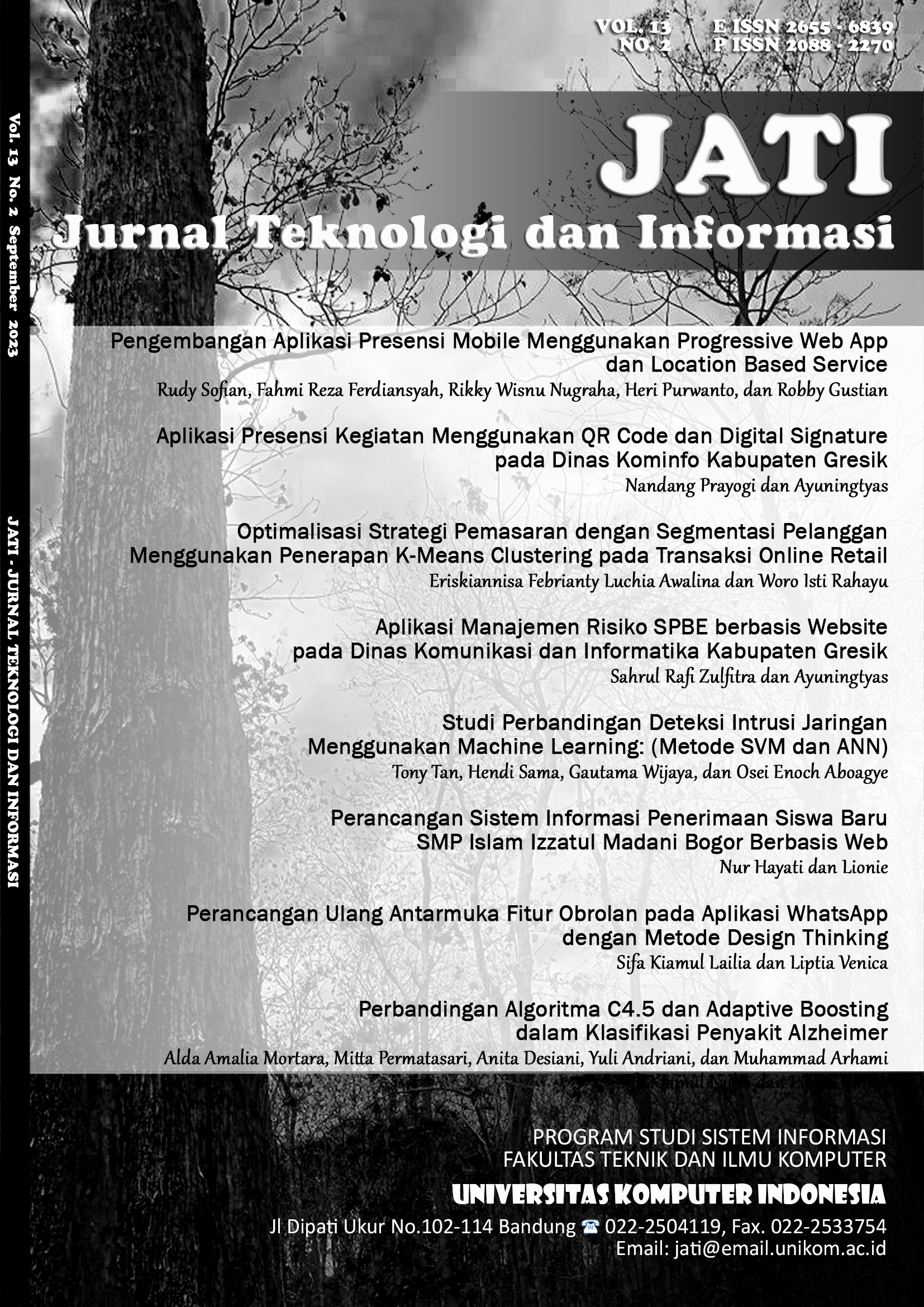Studi Perbandingan Deteksi Intrusi Jaringan Menggunakan Machine Learning: (Metode SVM dan ANN)
DOI:
https://doi.org/10.34010/jati.v13i2.10484Keywords:
Machine Learning, Jaringan, Deteksi Intrusi, SVM, ANNAbstract
Machine Learning berkaitan dengan penggunaan algoritma untuk membuat mesin berfungsi. Algoritma supervised machine learning belajar pada dataset untuk membuat prediksi berdasarkan pengetahuan yang mereka peroleh saat belajar. Machine Learning memiliki dampak signifikan dalam keamanan siber. Sistem deteksi intrusi (IDS), sistem pencegahan intrusi (IPS) dan firewall tradisional membantu mendeteksi intrusi tetapi sayangnya, kebanyakan dari mereka memberi false alarm, dapat memiliki kerentanan dan dapat salah konfigurasi. Penggunaan algoritma machine learning telah terbukti lebih efektif dalam deteksi intrusi. Penelitian ini bertujuan untuk membandingkan efektivitas Algoritma Support Vector Machine (SVM) dan Artificial Neural Network (ANN) untuk intrusi deteksi. Penelitian ini menggunakan metode eksperimen dengan melatih dan menguji SVM dan ANN pada Dataset KDD Cup 99 di Google Colaboratory. Skor akurasi pelatihan dan pengujian, waktu pelatihan dan pengujian, Receiver Operating Characteristic Curve (Kurva ROC) dan kecepatan jaringan adalah parameter untuk perbandingan. Hasil dari eksperimen menunjukkan bahwa; Kedua model bagus untuk mendeteksi intrusi karena SVM dan ANN memiliki skor di atas 90%. SVM lebih efektif daripada ANN dalam deteksi intrusi dengan akurasi pelatihan dan pengujian 99,87% dan 99,81%. Juga AUC untuk SVM adalah 1 untuk semua lima kelas dan mengambil lebih sedikit waktu dalam melatih dataset.
Downloads
Downloads
Published
Issue
Section
License

Ciptaan disebarluaskan di bawah Lisensi Creative Commons Atribusi-BerbagiSerupa 4.0 Internasional.









